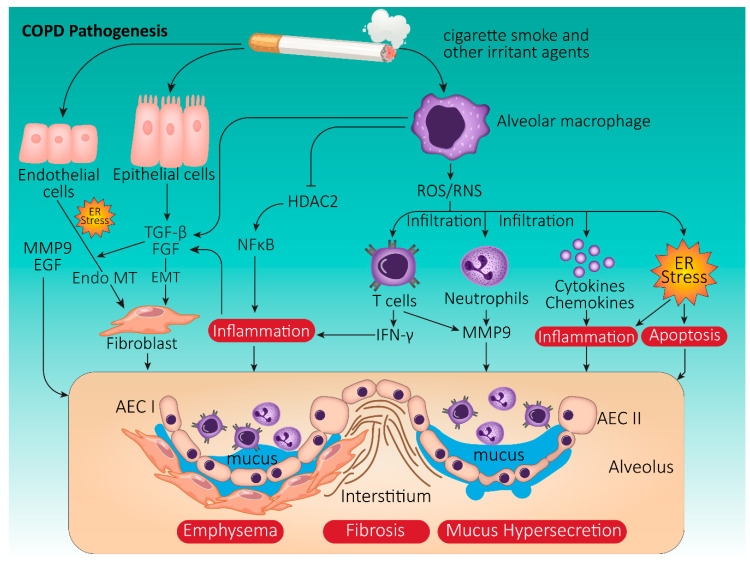Figure 2.
Schematic summary of COPD pathogenesis. Cigarette smoking is the most common risk factor triggering the development of chronic obstructive pulmonary disease (COPD). In response to irritant exposure, alveolar macrophage activation generates excessive reactive oxygen (ROS) and nitrogen (RNS) species, leading to T cell and neutrophil infiltration, cytokine/chemokine release, inflammation, and endoplasmic reticulum (ER) stress. Smoking damages resident epithelial cells in the lung, which promotes further release of pro-inflammatory factors, transforming growth factor-β (TGF-β), and matrix metalloproteinase-9 (MMP-9). All these factors trigger inflammation, alveolar epithelial cell (AEC) I and II apoptosis, fibrosis, and mucus hypersecretion, contributing to the development of airflow obstruction and emphysema. Abbreviations: FGF (fibroblast growth factor), HDAC2 (histone deacetylase 2), EGF (epidermal growth factor), INF-γ (interferon gamma).

